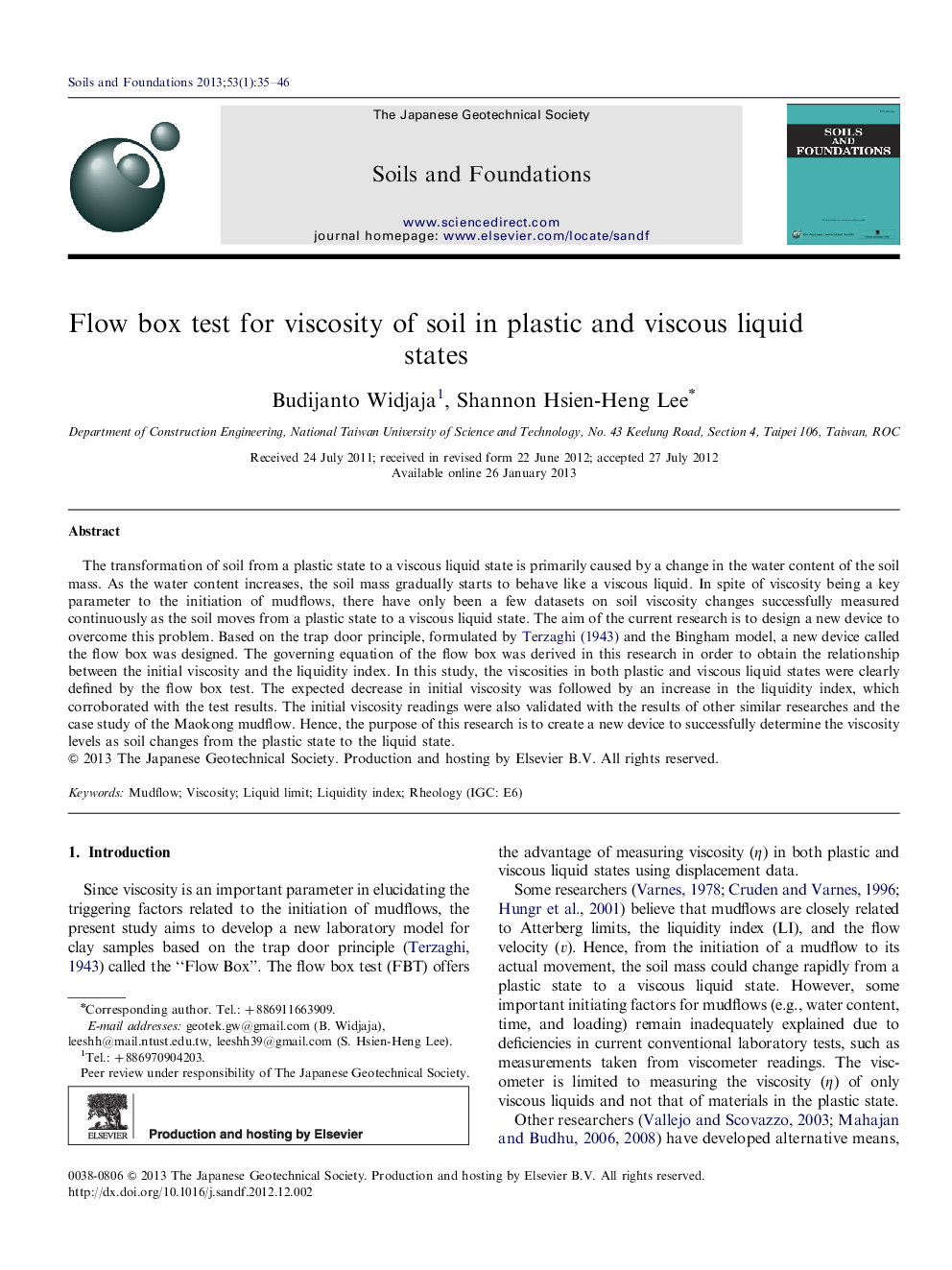| Article ID | Journal | Published Year | Pages | File Type |
|---|---|---|---|---|
| 307136 | Soils and Foundations | 2013 | 12 Pages |
The transformation of soil from a plastic state to a viscous liquid state is primarily caused by a change in the water content of the soil mass. As the water content increases, the soil mass gradually starts to behave like a viscous liquid. In spite of viscosity being a key parameter to the initiation of mudflows, there have only been a few datasets on soil viscosity changes successfully measured continuously as the soil moves from a plastic state to a viscous liquid state. The aim of the current research is to design a new device to overcome this problem. Based on the trap door principle, formulated by Terzaghi (1943) and the Bingham model, a new device called the flow box was designed. The governing equation of the flow box was derived in this research in order to obtain the relationship between the initial viscosity and the liquidity index. In this study, the viscosities in both plastic and viscous liquid states were clearly defined by the flow box test. The expected decrease in initial viscosity was followed by an increase in the liquidity index, which corroborated with the test results. The initial viscosity readings were also validated with the results of other similar researches and the case study of the Maokong mudflow. Hence, the purpose of this research is to create a new device to successfully determine the viscosity levels as soil changes from the plastic state to the liquid state.
